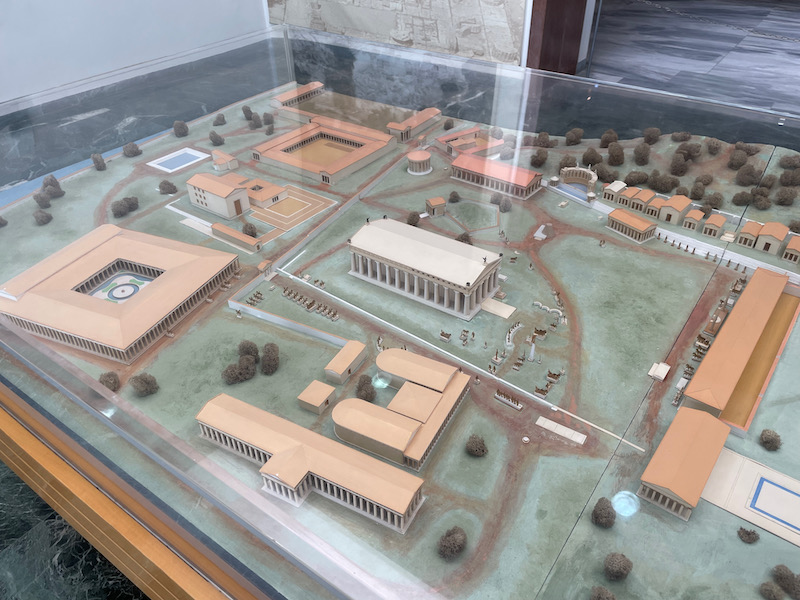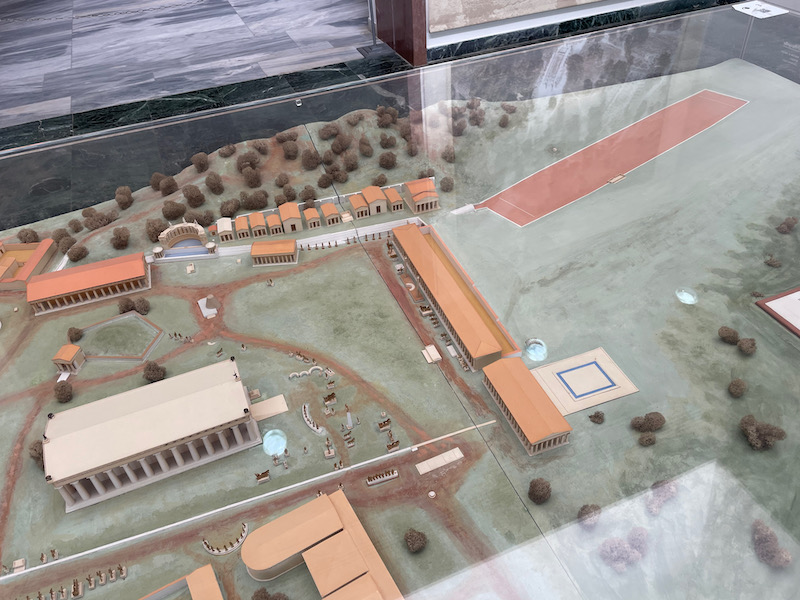Our Blog - Greece 2024 - Ancient Olympia
Ancient Olympia was a major religious sanctuary of ancient Greece and where the ancient Olympic Games were held every 4 years throughout Classical antiquity, from the 8th century BC to the 4th century AD. Despite the name, it is nowhere near Mount Olympus, where Zeus, Hera, and the other Greek gods were believed to have lived (which is in Northern Greece).
The site contains ruins of buildings and temples from several different periods. Based on artifacts seen in the museum, the area has been occupied since before 1500 BC. The first building activity evidence dates from around 600 BC with the Temple of Hera. The stadium was added and remodeled around 500 BC. Between the 5th and 4th centuries BC, quite a bit of work was done here, adding the Temple of Zeus along with Greek Baths and other buildings. Around 300 BC, the largest building on the site was built to house important visitors coming for both the games and the sanctuary. With increased significance of the games in the 3rd and 2nd centuries BC, a gymnasium and Palaestra was added.
The Romans then replaced the Greeks here around the 1st century AD, and extensive repairs were done to the various temples as well as the addition of new buildings (Roman baths replaced the older Greek baths). There was damage during a series of earthquakes in the 3rd century AD and then The Temple of Zeus was apparently destroyed around 426 AD, during the persecution of pagans in the late Roman Empire. Additional earthquakes in the 6th century and repeated flooding left the site abandoned by the early 7th century, ending with it being buried by dirt, in some places up to 8 meters deep (26 feet). And there it sat until it was re-discovered in 1766, with the first excavations starting in 1829.
There is still a linkage between this ancient site and the modern Olympic games. The Olympic flame of the modern-day Olympic Games is lit by reflection of sunlight in a parabolic mirror in front of the Temple of Hera and then transported by a torch to the place where the Games are held. When the 2004 Summer Olympics was hosted by Athens, the men's and women's shot put competitions were held here at the Olympia stadium.
A model of the ruins first ... This is a model of most of the site, showing what researchers and historians believe the various buildings looked like. In the middle, the white building is the Temple of Zeus. Just above that is a rectangular temple (Temple of Hera) and then the round temple to the left. Continuing to the top-left of the picture is the Palaestra and Gymnasium. The very large building with the open courtyard middle-left was built for visitors. Swinging all the way to the right-hand side, the upper-right shows a row of small buildings (these are treasury buildings) and then a long rectangular building ... this was at the entrance to the stadium (which goes down the road you see and out the right-hand side of the picture.. You can see it more clearly in the 2nd picture.


I think the best order is to go through the page with the archeological site itself first to see the actual ruins that are here, and then back to the page with the museum. There are things in the site that I reference can be seen "in the museum", and once you see the remains of the temple, I think it is easier to then picture the statues and decorations on the building.